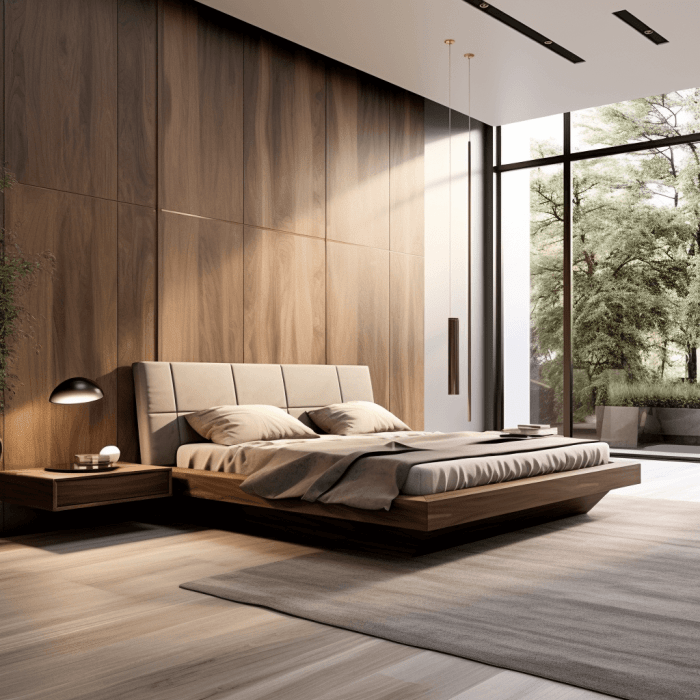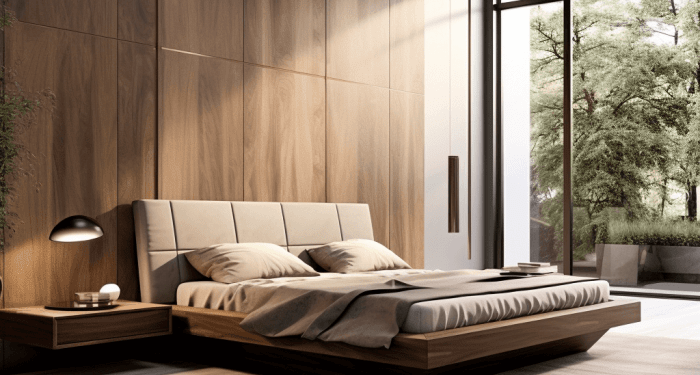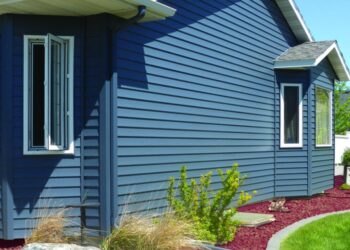As we delve into the world of bed design, we uncover a realm where creativity meets functionality. From the sleek lines of platform beds to the opulence of canopy beds, each style tells a unique story. Let's unravel the intricacies of bed design together.
Moving forward, we will explore the factors influencing bed design, the materials that bring these designs to life, and the functional features that elevate the sleeping experience.
Bed Design Styles
When it comes to bed design styles, there are various options to choose from to suit different preferences and interior decor themes.
Platform Beds
Platform beds are known for their low-profile design, featuring a solid base to support the mattress without the need for a box spring. These beds often have clean lines and a modern aesthetic, making them popular in minimalist and contemporary interior designs.
Canopy Beds
Canopy beds are characterized by their four posts, which are connected by a frame at the top. This frame can be left bare or draped with fabric to create a cozy and elegant look. Canopy beds are often seen in luxurious and romantic bedroom settings.
Sleigh Beds
Sleigh beds have a distinctive curved headboard and footboard that resemble a sleigh, hence the name. These beds exude a classic and timeless appeal, perfect for traditional or formal bedroom decor. Sleigh beds are typically made of wood and add a touch of sophistication to any room.
Modern Platform Beds
- Feature sleek lines and minimalistic design.
- Often made of materials like metal or wood with a polished finish.
- Popular in contemporary and industrial interior styles.
Farmhouse Canopy Beds
- Embody a rustic charm with distressed wood and simple detailing.
- Can be adorned with sheer curtains for a cozy and inviting feel.
- Complement farmhouse and cottage-style interiors.
Transitional Sleigh Beds
- Blend classic sleigh bed design with modern elements for a versatile look.
- Available in a variety of finishes to suit different color schemes.
- Perfect for transitional or eclectic bedroom decor.
Factors Influencing Bed Design

When it comes to choosing the right bed design, there are several factors that come into play, influencing the final decision. These factors can range from practical considerations to personal preferences and cultural influences.
Impact of Room Size and Layout
The size and layout of a room play a crucial role in determining the most suitable bed design. In smaller rooms, a platform bed or a loft bed can help maximize space, while in larger rooms, a king-size bed or a canopy bed can create a more grandiose look.
It's important to consider the proportions of the room and how the bed will fit in with other furniture pieces to ensure a harmonious overall design.
Personal Preferences and Needs
Personal preferences and needs also heavily influence the selection of a specific bed design. Some people may prefer a minimalist and modern bed frame, while others may opt for a more ornate and traditional style. Additionally, factors such as comfort, storage needs, and any specific health requirements can impact the choice of features like headboards, footboards, or adjustable bases.
Cultural Influences on Bed Design
Cultural influences can shape the design of beds in different regions, reflecting traditions, beliefs, and aesthetic preferences. For example, in Asian cultures, low platform beds are common, emphasizing simplicity and minimalism. In contrast, European cultures may favor intricate canopy beds with elaborate carvings and luxurious fabrics.
Understanding these cultural nuances can provide insight into the diverse range of bed designs available worldwide
Materials Used in Bed Design
When it comes to bed design, the choice of materials plays a crucial role in determining the overall look, durability, and maintenance of the bed frame. Different materials offer unique characteristics that can influence the style and functionality of the bed.
Wood
Wood is a classic choice for bed frames due to its natural beauty and versatility. It comes in various types such as oak, pine, mahogany, and walnut, each with its distinctive grain patterns and colors. Wood beds are known for their durability and timeless appeal.
However, they may require occasional maintenance such as polishing or refinishing to keep them looking their best.
Metal
Metal bed frames are popular for their sleek and modern look. They are often made from materials like steel, iron, or aluminum, offering a sturdy and long-lasting option. Metal beds are typically low maintenance and easy to clean, making them a practical choice for many.
Upholstered Fabrics
Upholstered bed frames add a touch of luxury and comfort to any bedroom. They are often padded and covered in fabrics like linen, velvet, or leather, providing a soft and cozy surface to lean against. Upholstered beds are available in a wide range of colors and patterns, allowing for customization to suit different design preferences.
Trends in Material Choices
In contemporary bed design, there is a growing trend towards combining different materials to create unique and stylish bed frames. For example, wood and metal hybrids or upholstered headboards with metal accents are becoming increasingly popular. This blending of materials adds visual interest and enhances the overall aesthetic of the bed, catering to diverse design tastes in the modern bedroom.
Functional Features in Bed Design
When it comes to bed design, functionality is key. Modern bed designs often incorporate innovative features to enhance the overall user experience. From storage compartments to adjustable headboards and built-in lighting, these functional elements can greatly improve the comfort and practicality of a bed.
Storage Compartments
Many modern bed designs come with built-in storage compartments, such as drawers or shelves, underneath the mattress. These storage solutions are perfect for maximizing space in smaller bedrooms and keeping essentials within easy reach.
Adjustable Headboards
Adjustable headboards are another popular feature in modern bed designs. These headboards can be raised or lowered to provide customized support for reading or watching TV in bed, offering added comfort and versatility.
Built-in Lighting
Bed designs with built-in lighting fixtures have become increasingly popular. These lights can be integrated into the headboard or frame, providing convenient illumination for reading or creating a cozy ambiance in the bedroom.
Ergonomic Considerations
When designing beds, ergonomic considerations are essential to ensure optimal comfort and support for users. Factors such as mattress firmness, pillow height, and bed height are carefully considered to promote better sleep quality and overall well-being.
Smart Bed Designs
Smart bed designs are revolutionizing the way we sleep. These beds incorporate technology such as adjustable firmness settings, sleep tracking sensors, and built-in speakers for a truly personalized sleeping experience. With features like automatic adjustments based on sleep patterns, smart beds are changing the game in sleep technology.
End of Discussion
In conclusion, bed design is not just about aesthetics but also about comfort and practicality. By understanding the various styles, materials, and features, we can create a truly personalized sleeping sanctuary that reflects our individuality and meets our needs. Dive into the world of bed design and transform your sleeping space today.
FAQ Guide
What are the most popular bed design styles?
Popular bed design styles include platform beds, canopy beds, sleigh beds, and more.
How do room size and layout influence bed design choices?
Room size and layout impact bed design choices by determining the scale and proportion of the bed within the space.
What materials are commonly used in bed frames?
Common materials used in bed frames are wood, metal, and upholstered fabrics, each with their own unique characteristics.
What functional features can be found in modern bed designs?
Modern bed designs may include features like storage compartments, adjustable headboards, and built-in lighting for added convenience and comfort.
How do ergonomic considerations play a role in bed design?
Ergonomic considerations ensure that beds are designed for optimal comfort and practicality, taking into account factors like body support and ease of use.















